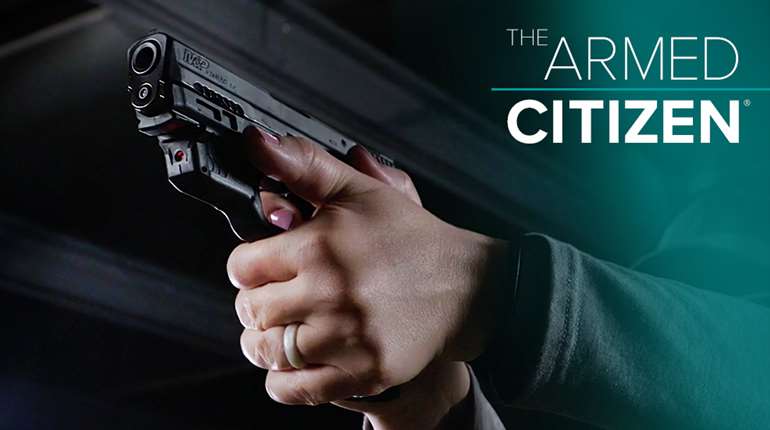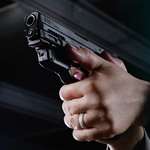
Going to the range and sighting-in your rifle is one of the most important things you can do to ensure that your hunt is successful. It does not matter if you are either sighting-in a new rifle and scope, or just going to the range to make sure your rifle is still on target from the last hunting season, sighting-in is critical for a quick, clean, ethical kill. There is no shortcut to sighting-in your rifle prior to hunting season. There is a precise procedure to performing this pre-hunt ritual. There have been many a missed trophy because a hunter decided he or she was too busy to take the time to go to the range.
Sighting-In a New Rifle and Scope Combo
There are many tools on the market today for the sole purpose of sighting-in your rifle and scope. There are different types of cartridge lasers that fit in the chamber, magnetic sighting tools and others. For hunting purposes, nothing beats the old standby—the muzzle-inserted bore sight tool.
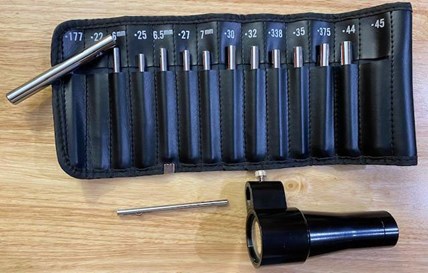
A bore sight tool consists of two parts: a bore sighter and an arbor. A proper bore sight kit has multiple arbors for different calibers. Before starting the bore sight, put your rifle in a gun vise for stability. Insert the correct arbor into the slot under the optic, then tighten with the thumb screw. Then insert the other end of the arbor into the muzzle of the firearm until the slot under the bore sight comes in contact with the end of the barrel.

The last steps in bore sighting are the manipulation of the rifle scope’s windage and elevation adjustments. When looking through the rifle’s scope, you will see the bore sight’s crosshair in the middle of a grid. When the crosshair of the scope is in alignment of the crosshair of the bore sighter, your rifle and scope are bore sighted.
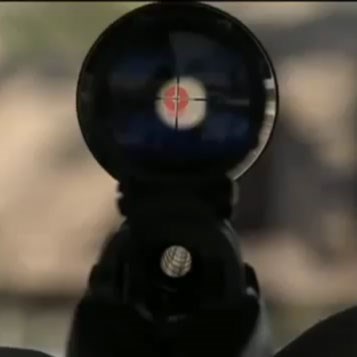
Bore sighting may be complete, but you are not finished. Now you are ready for the gun range for the final sighting-in. A safety note: It is very important that you do not shoot rounds through your rifle with the bore sight still inserted in the muzzle!
Once your rifle is bore sighted you should be “on paper.” This means that after you stabilize your firearm with either a gun vise or sandbags, following the NRA’s proper shooting techniques, you then place three shots into a target. You should have a tight grouping of your shots. It is very important to remember to always, always, always sight your rifle in with the same ammunition you plan on hunting with!
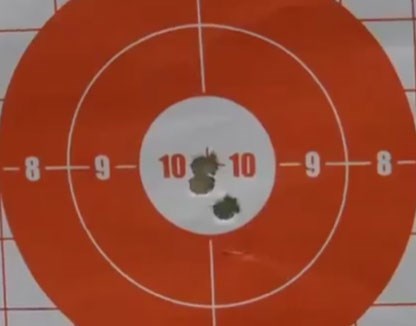
You then, once again, manipulate the rifle scope’s windage and elevation adjustments to bring your next three shots to the point where you are aiming—such as the target’s bullseye. Now your new rifle and scope combo is sighted-in. (Note that once your firearm’s scope is fine-tuned to the rifle, your scope’s crosshair may no longer be aligned with the bore sight’s crosshair.)
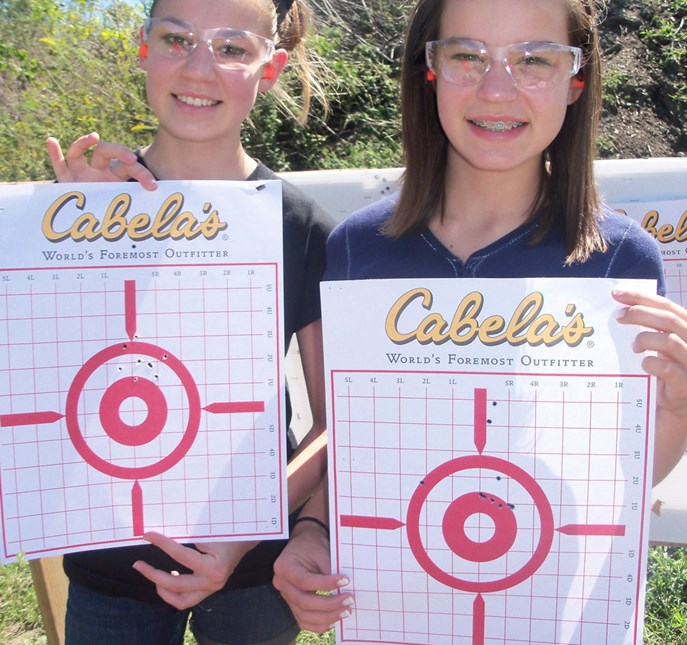
Sighting-in a Previously Sighted-in Rifle
At minimum, you should check your rifle’s scope sighting at least once a year, preferably just before your first hunt of the season. There are several reasons why a rifle’s scoping sighting could become “off,” even though you previously went through the proper sighting in process.
Once your rifle is sighted-in, it needs to be handled with moderate care. It is not as easy as people think it is to knock off a rifle’s sight. But like any precision tool, a rifle must be taken care of. Dropping a rifle or bumping your scope hard could knock the relationship between your rifle and scope off target. Even putting your rifle, cased or uncased, in the back of a pickup can throw off your shots if you are driving down a very bumpy road!
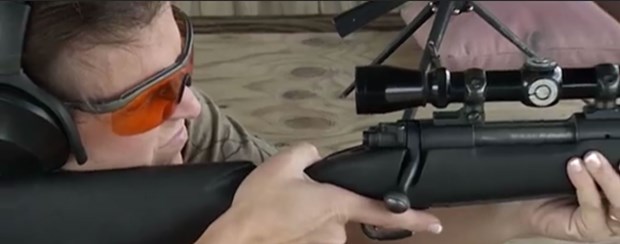
To check the relationship between your rifle and scope’s sight, you need to be at a gun range and shoot at the distance at which you want your rifle to be sighted-in. Once again, you need to stabilize your firearm with either a gun vise or sandbags, following the NRA’s proper shooting techniques, and place three shots into a target. You should have a tight grouping of your shots. If the grouping is off, turn your scope’s windage and elevation adjustments to re-zero the firearm.
Mistakes to Avoid
There are several mistakes shooters make when sighting-in their rifle. The first is trying to sight-in during extremely hot weather. (This can be a problem, especially in Texas where “Hot” is our middle name.) If you sight-in your rifle when it is 95 degrees Fahrenheit, do not expect to hit the same spot when the temperature is freezing. In hot climates such as where I live, I may have to sight-in twice in a season for early season hunting and late season hunting.
The second mistake is shooting too much. Yes, that’s possible, if you are sighting-in a deer rifle. The most you should shoot when sighting-in a rifle is three to four shots at a time. After three or four shots, the rifle’s barrel needs to thoroughly cool. To help cool down the barrel, remove the bolt if possible.
Use the Right Tools
Some shooters bore sight their rifle by removing the bolt and looking downrange through the scope, then the barrel, making the appropriate adjustments to get them “on paper.” Some shooters start at a close target, then gradually increase the range until they reach their desired distance. Others use a laser cartridge to sight-in their rifles. All these methods are effective, but if you want to use the right tool, reach for the muzzle-inserted bore sight.
There is a major benefit to sighting-in with a muzzle-inserted bore sight. If you are at the deer lease or hunting in one of our National Forests and you drop your rifle, bump it against a door frame, or just want to check the sights, pop the bore sight in and check it out. The only downside to using a muzzle inserted bore sight is that you cannot blame the rifle if you miss!
If you remember the process above, you will recall that you start out with a sighted-in rifle with the crosshair of the scope on the crosshair on the grid of the muzzle-inserted bore sight optic. Make note of where the sighted-in rifle’s crosshairs fall on the bore sight optic’s grid. This way when you are in the field, all you have to do to check your sights without shooting and scaring game is to insert the bore sight into the muzzle. Look at where the scope’s crosshair falls on the grid. If you dropped your rifle and the scope was knocked off sight, all you have to do is make the proper windage or elevation adjustments.
Remember to check those sights, and have a great hunting season!

















